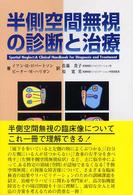- ホーム
- > 洋書
- > 英文書
- > Politics / International Relations
基本説明
Written within the border context of international relations theory and changes in Japan's domestic and regional politics.
Full Description
Japan's postwar constitution in which the Japanese government famously renounced war forever has meant that the country has been reluctant, until recently, to commit its armed forces in the international arena. However, in the last decade or so, Japan has played a much more active role in peacekeeping and its troops have been deployed as part of UN forces in trouble spots as varied as the Gulf, Cambodia, the Golan Heights, Kosovo and the East Timor. This book examines these developments within the border context of international relations theory and changes in Japan's domestic and regional politics.
Contents
Contents List of figures List of tables List of abbreviations Glossary Acknowledgements Introduction Chapter 1: IR theory and Japan 1.1 Making sense of Japan's foreign policy 1.2 Realism 1.2.i Realism, Japan's foreign policy and peacekeeping 1.3 Liberalism 1.3.i Liberalism, Japan's foreign policy and peacekeeping 1.4 Japan's foreign policy-making processes and peacekeeping 1.5 Constructivism 1.5.i Constructivism, Japan's foreign policy and peacekeeping 1.6 Summary Chapter 2: Norms and Japan 2.1 Introduction 2.2 Norms 2.2.i Existence 2.2.ii Evolution 2.2.iii Strength 2.2.iv Interaction 2.3 Japan and Norms 2.3.i Anti-militarism 2.3.ii US bilateralism 2.3.iii East Asianism 2.3.iv UN internationalism 2.4 Peacekeeping as a norm 2.4.i Specificity 2.4.ii Durability 2.4.iii Concordance 2.5 Summary Chapter 3: The Cold War, 1956 to 1990 3.1 Introduction 3.2 Postwar rehabilitation 3.3 The 1980s 3.4 Summary Chapter 4: The Second Gulf War 4.1 Introduction 4.2 A brief history of the Second Gulf War 4.3 The response of the international community 4.4 Japan's response 4.4.i Anti-militarism 4.4.ii US bilateralism 4.4.iii East Asianism 4.4.iv UN internationalism and peacekeeping 4.5 Summary Chapter 5: Cambodia 5.1 Introduction 5.2 A brief history of the Cambodian conflict 5.3 Japan's contribution 5.3.i Anti-militarism 5.3.ii US bilateralism 5.3.iii East Asianism 5.3.iv UN internationalism and peacekeeping 5.4 Summary Chapter 6: Post-UNTAC operations 6.1 Post-UNTAC 6.2 The changing norm of post-Cold War peacekeeping 6.2.i ONUMOZ 6.2.ii UNDOF 6.2.iii ONUSAL 6.2.iv UNAMIR 6.2.v East Timor 6.2.vi 11 September 2001 6.2.vii The Brahimi Report 6.3 Japan's response 6.3.i Anti-militarism 6.3.ii US bilateralism 6.3.iii East Asianism 6.3.iv UN internationalism and peacekeeping 6.4 Summary Chapter 7: Conclusions 7.1 New pressures, new responses 7.2 The existence and importance of norms 7.3 Measuring norms 7.3.i Specificity 7.3.ii Durability 7.3.iii Concordance 7.4 Summary Bibliography
-

- 和書
- 半側空間無視の診断と治療



